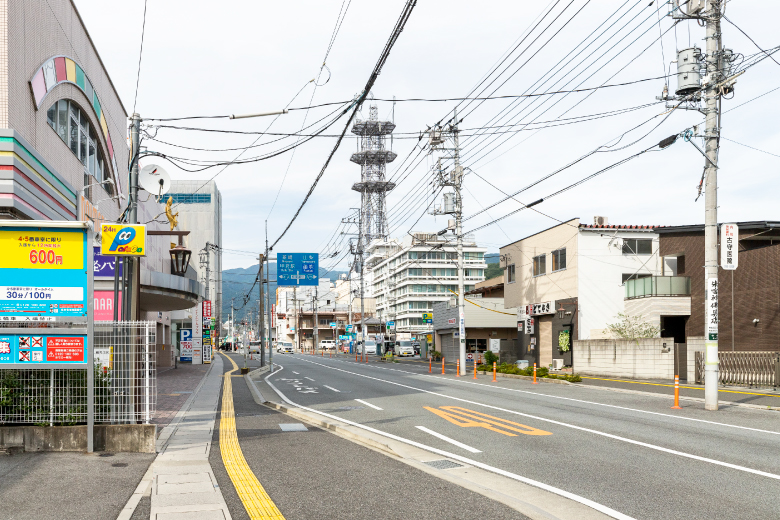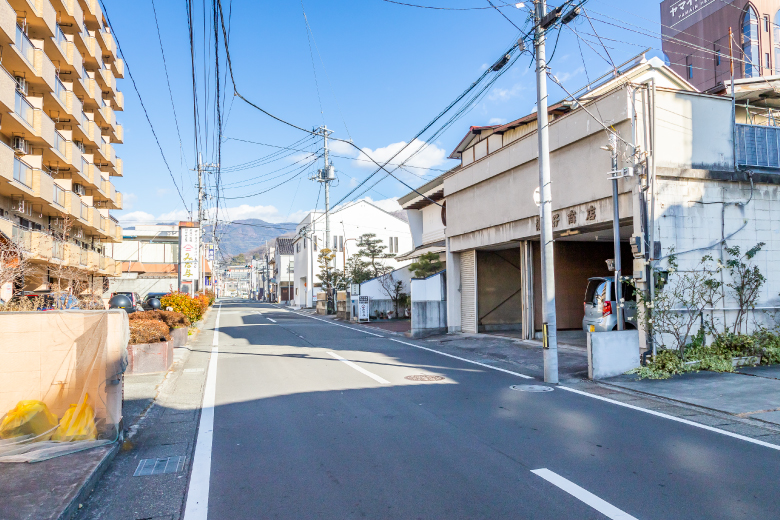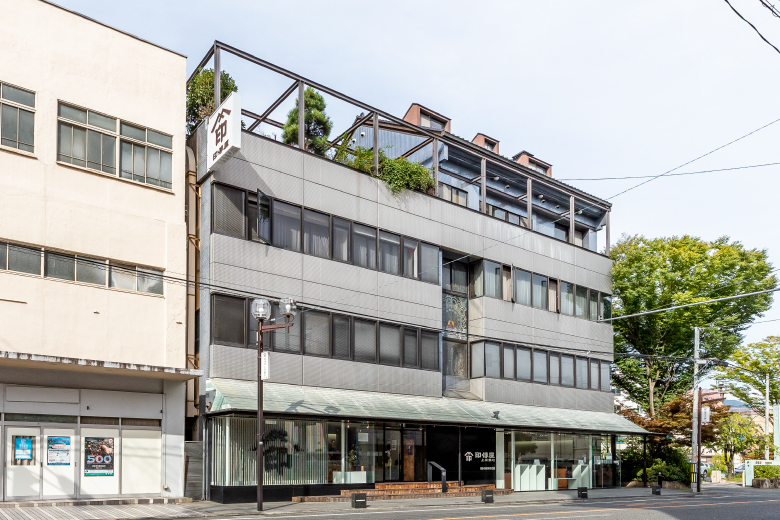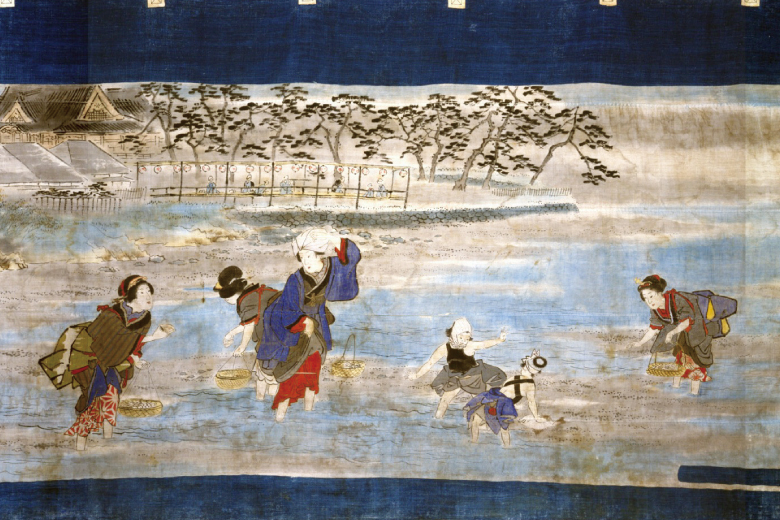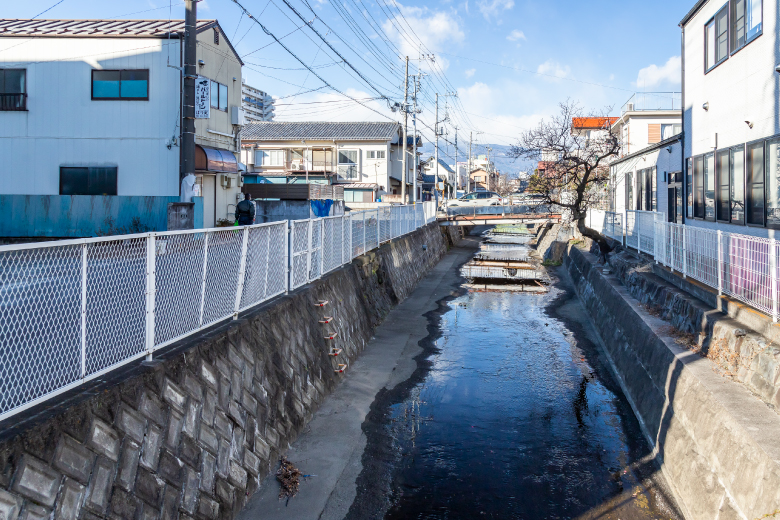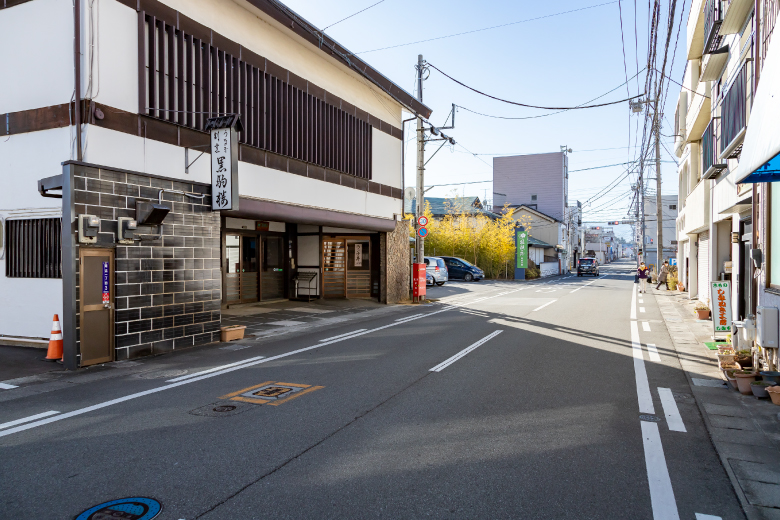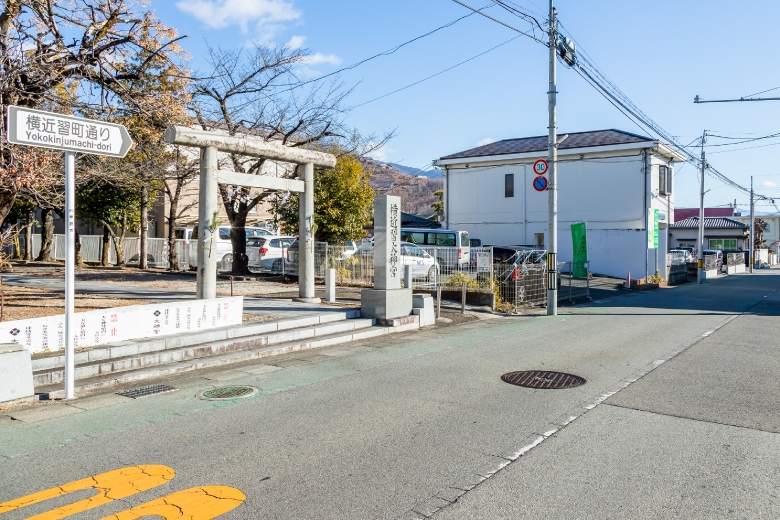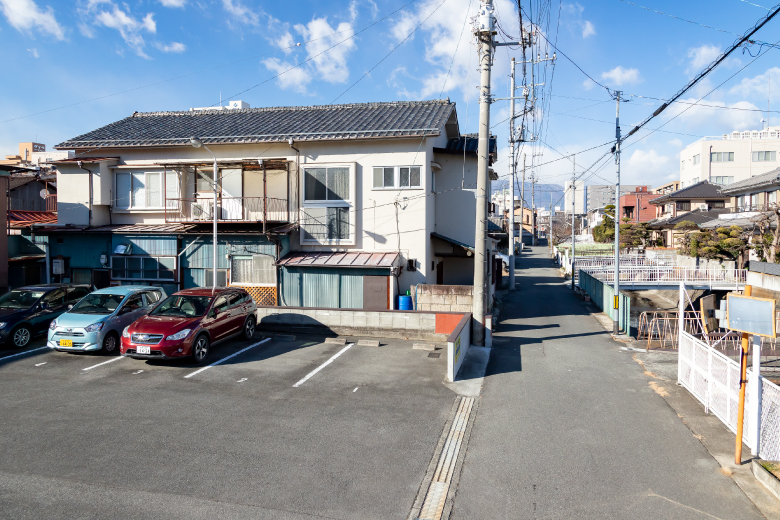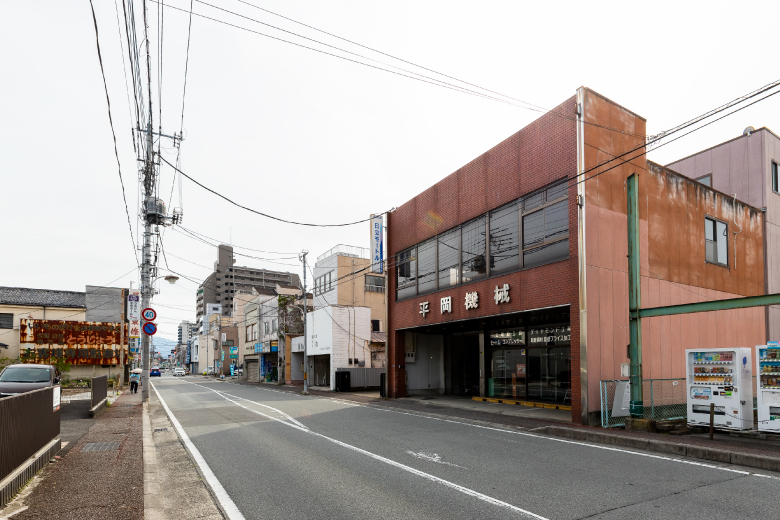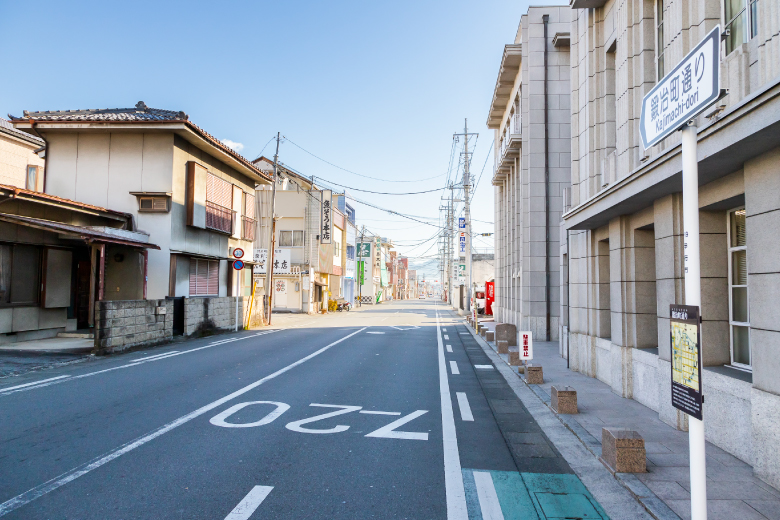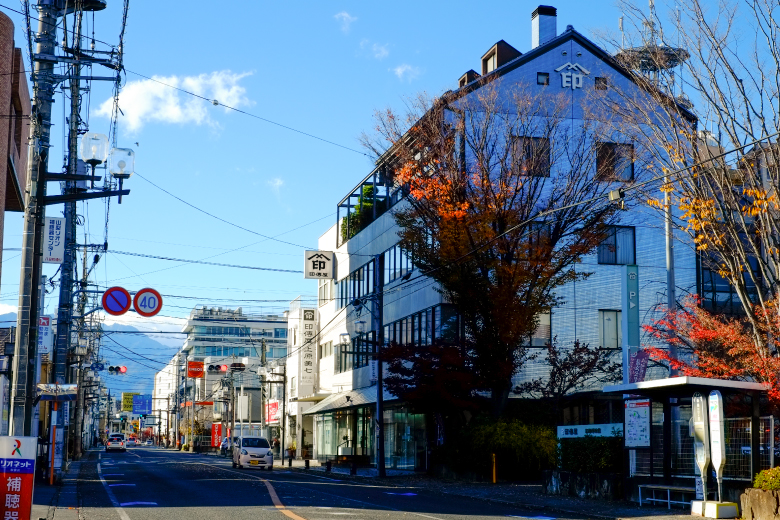Kofu-Yanagimachi-shuku was built in the town around Kofu-jo Castle. This post station was always bustling with merchants, performers and artists such as Ichikawa Danjuro and Utagawa Hiroshige. Around this post station, there was a street along which many masters gathered and formed into districts such as Uo-machi (which means Fisherman Town), Okeya-machi (which means Wooden Bucket Merchant Town), and Kajiya-machi (which means Blacksmith Town), names that remain to this day. There are also some traces of moats and earthen walls that surrounded samurai residence areas and merchant areas seen in various locations. In this post station, local specialty products and food were produced. These included Inden products, which are made of lacquered deerskin and were loved by the stylish people in Edo, and boiled abalone in soy sauce-based sauce, a technique developed to preserve the abalone while it was transported such a long distance from the ocean, are still available at stores that were listed in the Kofu Kaimono Hitori Annai (Kofu Shopping Guide), an information magazine published in the Edo Period.
Distance : 4km / Required Time : 3h / walk, bicycle
Starting point : Kofu Station
Goal point : Kofu Station
COURSE MAP
Starting point
Goal point
Parking lot
Toilet
Tap the spot you want to read about!
- 01Kofu Station
- 02Sakuramachi Street
- 03Nigori River
- 04Kameya-za
- 05Tsuchi-bashi Bridge
- 06former Kajimachi Area
- 07Kofu-Yanagimachi-Shuku
- 08Site of the Main Lodging (Honjin) in Kofu-Yanagimachi-Shuku
- 09Yanagimatchi-daijingu Shrine
- 10Utagawa Hiroshige and Large Painted Curtains at the Doso-jin (Travelers’ Guardian Deity) Festival
- 11Former Yokamachi Area
- 12Inden-ya Uehara Yushichi Honten
- 13Nigai(Minayo)
- 14Former Uomachi Area
- 15Yamanashi Chuo Bank Financial Archives Museum
- 16Former Yokokinjumachi Area
- 17Kofu Station
